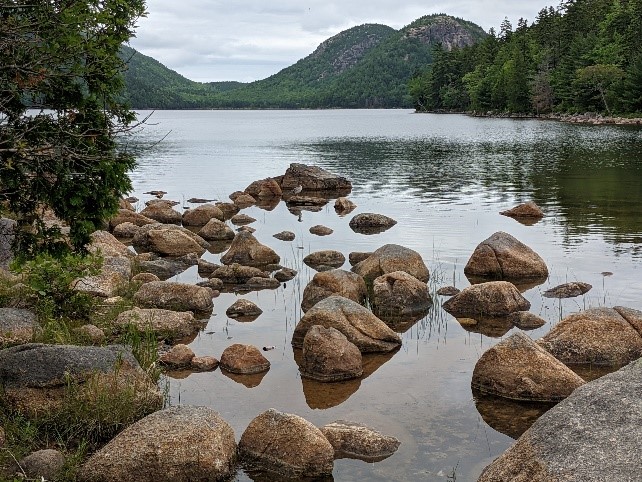Acadia National Park

I could have spent a month in Acadia National Park and still not have seen everything there is to see. While I was able to spend 3 days at Acadia National Park, it wasn’t nearly enough. Cadillac Mountain is one of the most popular destinations in the park and for good reason – at an elevation of 1,530 feet, it is the highest point within 25 miles of the Atlantic Ocean shoreline in North America from Cape Breton Highlands in Nova Scotia all the way down to Mexico. From October 7 through March 6, it is the first sunrise in the United States. An extremely popular activity is to bundle up and head to the top of Cadillac Mountain to take in the sunrise, but it should not surprise anyone that I am not one for popularity. Instead of waking up before 3:00 in the morning to make the 4:49 sunrise, we opted for a leisurely breakfast and a 9:30 ascent – the National Park Service now requires timed-ticket entry to manage traffic at its most popular destinations. Even though we missed the “must see” sunrise, the views and experience at the top of Cadillac Mountain were remarkable – we could see Bar Island across the harbor, the town of Bar Harbor itself, and for miles and miles into the Atlantic. For those who want to flex their muscles, literally, there are trails to hike up to the summit and others with lungs and quads of steel choose to cycle to the top.

If you’re staying in Bar Harbor, an absolute must-do activity is to stroll over to the land bridge between Mount Desert Island and Bar Island, which is also a part of Acadia National Park. To cross the land bridge and tour Bar Island is a couple miles round trip, but the extremely important factor to keep in mind is that if you miss the tide you’ll have to wait 6 hours, or call a water taxi, to return to the mainland!

Jordan Pond is a must-see location within the park and one of the most popular trails with good reason. Jordan Pond, a lake by Indiana standards, covers 187 acres and has a shoreline of 3.6 miles. The loop trail around the shoreline is relatively easy to traverse from an exertion standpoint, however it is not accessible for those with mobility impairments due to the frequent uneven ground, and sections with boulders to walk upon. The pond was formed by the Wisconsin ice sheet during the last glacial period. The pond’s water is exceptionally clear – the average visibility is down to 44 feet! The maximum depth of the water is 150 feet and it supplies much of Mount Desert Island with fresh water. While an estimated 60% of Acadia National Park visitors will visit Jordan Pond, visitors aren’t allowed to swim, paddle board, windsurf, SCUBA, bring dogs, or use boats above 10 horsepower to protect the water. Jordan Pond is ringed with mountains, including The Bubbles, a pair of “roche moutonée” which is a rock formation caused by the passing of a glacier.
The final activity we did in the park was auto-touring on the Park Loop Road – a 27 mile road around the east side of Mount Desert Island hitting popular destinations such as Sieur de Monts, Sand Beach, Otter Point, Jordan Pond, and Cadillac Mountain, beginning at the Hulls Cove Visitors Center. We took our time on the loop, often pulling into an overlook to trot along a trail or gawk at wildlife. Shortly after we passed the Sand Beach, a basin appeared where we were able to observe the impact of high and low tide on the local flora and fauna. A little farther along we spotted a grassy meadow that appeared to go on forever. Even though 27 miles may seem like a quick jaunt, if you take your time, as we did, it can provide hours of exploration.
The preservation of the land in Acadia was a monumental achievement – it was the first National Park east of the Mississippi River, and I simply cannot wait to return.



